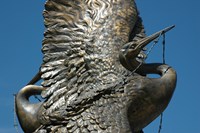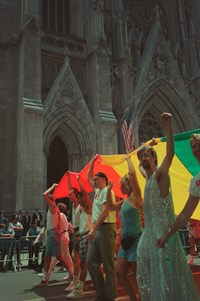- Lewis & Clark National Historic Trail (17)
- Arches National Park (12)
- Golden Gate National Recreation Area (10)
- Aleutian Islands World War II National Historic Area (9)
- Sleeping Bear Dunes National Lakeshore (8)
- Yellowstone National Park (8)
- Boston African American National Historic Site (7)
- Grand Canyon National Park (7)
- Boston National Historical Park (6)
- Show More ...
- Youth Programs (3)
- Youth Programs Division (3)
- Geologic Resources Division (2)
- National Center for Preservation Technology and Training (2)
- National Heritage Areas Program (2)
- American Indian Affairs (1)
- Archeology Program (1)
- Harpers Ferry Center (1)
- National Historic Landmarks Program (1)
- Show More ...
Showing 295 results for sentry milk-vetch ...
Georg & Flora Schmidt Farm
- Type: Article
In May 1945, General Dwight D. Eisenhower accepted the surrender of Germany, ending World War II in Europe. Eisenhower chose to remember Victory in Europe by actively commemorating the sacrifices and cooperation that made it possible. For Eisenhower and the Allies, the road to victory was not easy. Eisenhower believed that Victory in Europe Day--VE Day--could and should serve as a reminder of the cost of war for future generations. Explore this story further in this article.
Japanese American Memorial to Patriotism During World War II
Glen Haven General Store
- Type: Place
There was only one place in the late 19th century and 20th century that provided the necessities for life-meat, produce, fabrics, communication and tools: the General Store. It was the hub of D.H. Day's company. The lumbermen and dock workers were paid in company "scrip" so they could only shop at this store. At different times in its history, the store served as a post office, ticket and freight office for steamers, telegraph station, lumber salesroom, and more.
Avalanche Lake Trail
- Type: Place
The Avalanche Lake Trail begins in the same place as the Trail of the Cedars and the Avalanche Campground. The trail climbs steadily through an old growth forest to an alpine like with outstanding waterfalls. Avalanche Lake 2.3 mi (3.7 km), one way Elevation gain: 500 ft (152 m) Trailhead: Avalanche Picnic Area
- Type: Person
Charles Cornwallis, 1st Marquess Cornwallis and 2nd Earl Cornwallis, served as a British general during the American Revolution and notably surrendered his army to General Washington's Continental army and the allied French forces at Yorktown, Virginia in October 1781. This surrender effectively ended hostilities between British and American forces and led to peace negotiations, ending the war and recognizing American independence. Cornwallis later governed in India.
Information Panel: Aftermath
Lucy Buck
1987 AIDS Memorial Quilt on the National Mall
- Type: Place
The AIDS Memorial Quilt has travelled across the country and been displayed in many prominent places, including here on the National Mall in front of the Washington Monument. This was the ‘Inaugural Display’, the result of cumulative efforts of thousands of volunteers and countless hours of work. It is a tragic memorial to thousands of lives lost, while also representing the enduring love of those who knew them best.
Letter from William Brown and Thomas Gilmore to William Dunlap – April 29, 1768
- Type: Article
In April 1768, William Brown and Thomas Gilmore sent a letter from their printing office in Québec, Canada to William Dunlap, nephew to Benjamin Franklin and printer in Philadelphia. The letter requested Dunlap purchase and send an enslaved “boy” or his own enslaved worker, Priamus, to work in their Québec office.
1979 March on Washington for Lesbian and Gay Rights
- Type: Place
Participants in the first National March on Washington for Lesbian and Gay Rights marched across E Street in front of the South Lawn of the White House on October 14, 1979. The 1979 march is seen as the birth of a national movement for LGB rights that helped small, local organizations unite, know that they were not alone, and bring their issues to a national stage showcasing their collective power.
- Type: Person
A former U.S. military officer stationed at the Presidio of San Francisco, Gilbert Baker joined the San Francisco Gay Liberation Movement after his discharge. Baker went on to design and create the first Rainbow Pride Flag for San Francisco Gay Freedom Day. The activism and art of Gilbert Baker helped unify a community in the bay area and beyond.
Soldier vs. Settler: Railroads in Southeast Kansas
- Type: Article
The first railroad came to Fort Scott in 1869. As it built south, it cut through land already inhabited by squatters who had not yet legally staked their claims. Settlers attacked, and the US Army sent in soldiers to protect the railroad. How would you feel if someone tried to take land that you were living on?
Harmony Borax Works
On Guard! An Online Sentry Activity
Adolescence-Soldiers on the Frontier
- Type: Article
Have you ever had your job description change? Soldiers at Fort Scott were sent here to serve as a "border patrol" to keep Missouri settlers and Native American tribes separated. However, many of the events in which they became involved in the 1840s had the opposite effect. Instead of containing westward expansion, soldiers at Fort Scott became agents of the largest expansion of territory in US history.
Fort Boise Site
Ken-Tuck-U-Inn
- Type: Place
As logging in the area faded, many local entrepreneurs looked for other ways to earn a living. Bertie Bancroft, who grew up in Aral, saw the growing tourist trade and built the Ken-Tuck-U-Inn. Bertie and his wife Donna operated the inn. Other farm inns were developing as the local economy was turning to serve the growing tourist industry. Produce grown on the farm was used to make meals for the guests, which was more valuable than selling it wholesale to local markets.
Thompson Baxter
- Type: Person
Thompson Baxter is listed as a member of the 1850 Boston Vigilance Committee, an organization that provided funds and other assistance to freedom seekers making their way to and through Boston on the Underground Railroad.
Joseph Allyne
- Type: Person
Joseph Allyne support the abolitionist movement through his contributions to and participation in the Massachusetts Anti-Slavery Society, the Boston Free Soil Club, and the Boston Vigilance Committee of 1850.


















